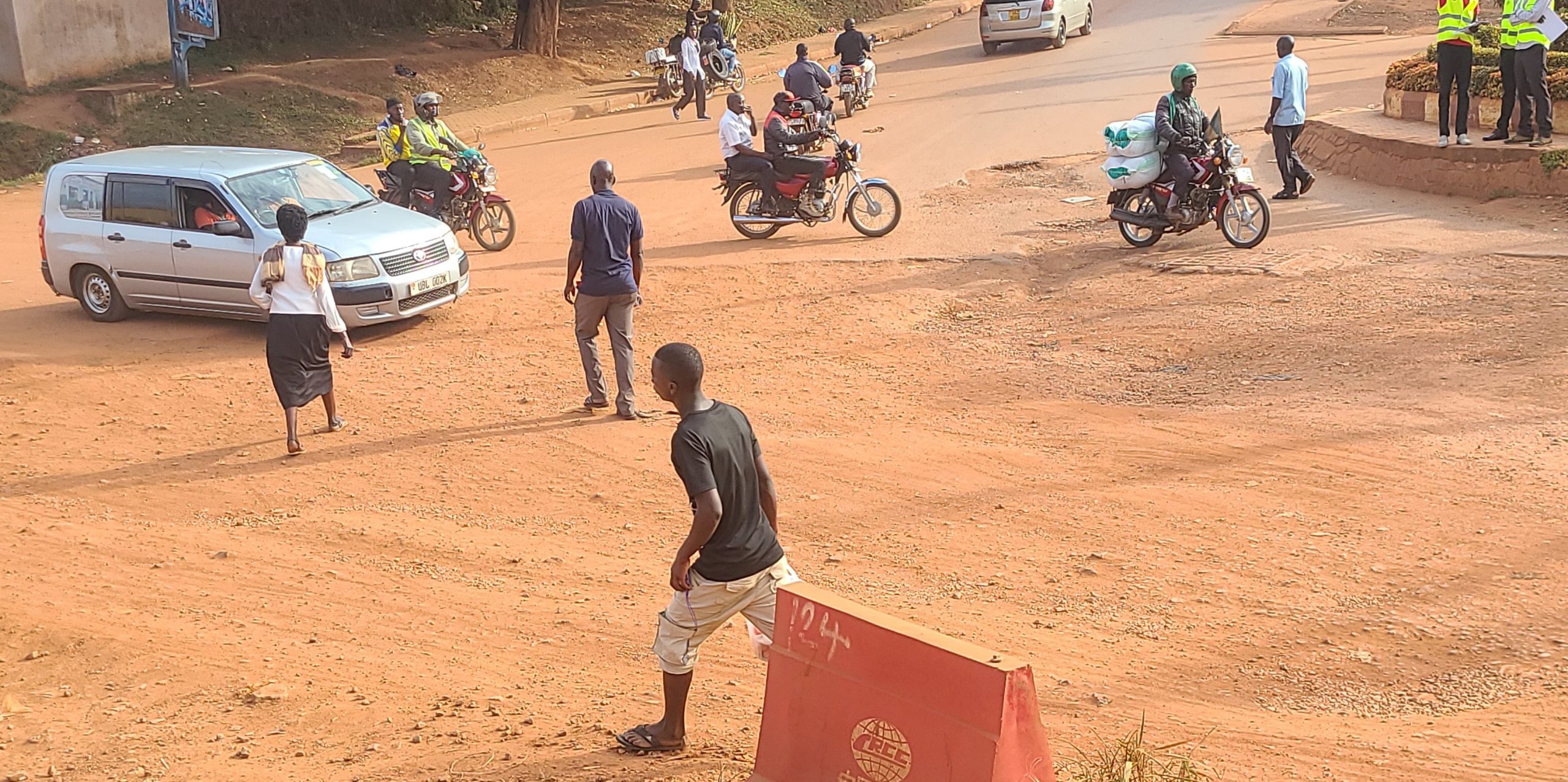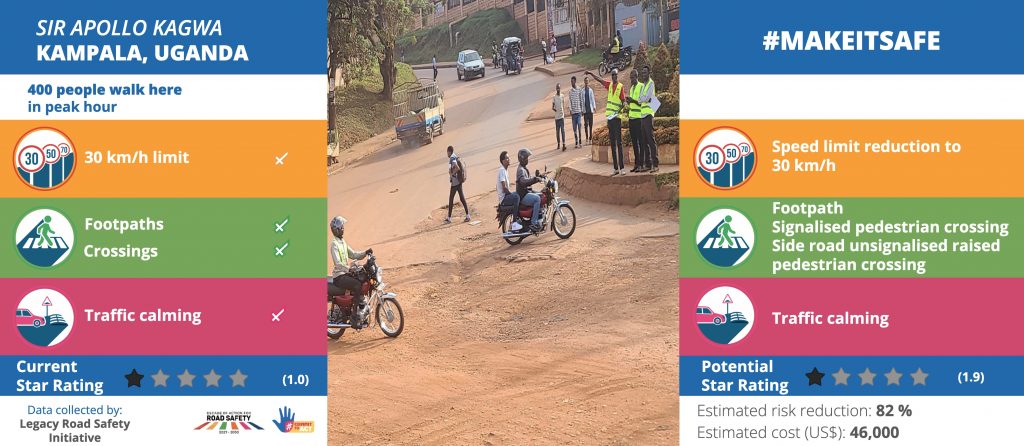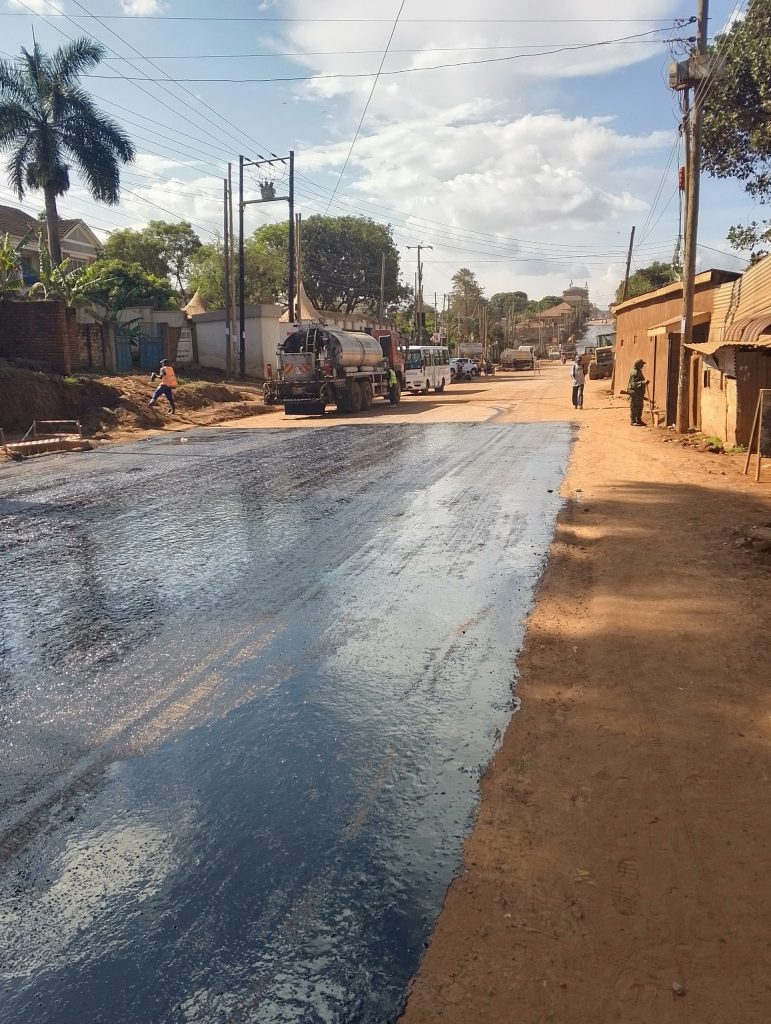
Crowded roads, missing footpaths, and unsafe crossings are part of daily journeys for many in Kampala, Uganda. However, some things have started to change.
Using Mobility Snapshots, Legacy Road Safety Initiative (LRSI) was able to show what it’s like and how it really feels to get around town. The Mobility Snapshot is a tool developed by the Alliance to support NGOs in their advocacy and engage with policymakers. It shows data collected at a specific intersection in the local community, including the number of intersection users—especially pedestrians—and whether the Alliance’s Priority Interventions are present or absent: 30 km/h zones, pedestrian facilities and traffic calming. The key message behind the Mobility Snapshot is that we need to put people at the center of street design. When we intersections are safe for pedestrians, they are safe for everyone. The Mobility Snapshots are an excellent tool for NGO advocacy, showing the reality of people’s journeys, and presenting tangible evidence-based solutions to make them safe.
During the 2024 Mobility Snapshot campaign, LRSI worked alongside other members of the Road Safety Advocacy Coalition (RSOACU), which includes a number of Alliance members. Several coalition members also did Mobility Snapshots, including HOVITA, Responsive Drivers Uganda, and Uganda Road Accident Reduction Network Organisation. Coordinated action strengthened the NGOs’ joint and separate advocacy. Evidence presented by different NGOs from different intersections fueled the strength of their argument with the authorities and expedited the upgrade process.
LRSI collected data at two intersections in Kampala: the intersection of Sir Apollo Kagwa Road and Bukesa Road, and the T-junction of Gaddafi National Mosque in Old Kampala. Based on the data collected with the Mobility Snapshot, both intersections were rated by iRAP as one star for pedestrians, but could achieve two stars if the recommended Priority Interventions were implemented. The Mobility Snapshots revealed issues including missing footpaths, lack of signage, and dangerous crossings. “When we started this work, it was about telling a story,” says Richard Young Owere, from LRSI.

“We took the data from the Mobility Snapshot to the City Authority,” Richard explains. “The sheer risk present at those intersections proved shocking to many. It was a revelation that ignited conversations previously left unspoken.”
LRSI didn’t just show the problems—they offered practical solutions. As a result, changes at the intersection of Sir Apollo Kagwa Road and Bukesa Road have already begun, and infrastructure improvement implementation is in progress. Signalized pedestrian crossing, creation of footpaths, speed limit reduction to 30 km/h, improved road surface grip with road markings and signs, and the installation of street lighting are among the changes implemented, thanks to the information collected from the Mobility Snapshot. The authorities have also committed to modifications at Gaddafi National Mosque, which are in the design stage at the moment.

There’s still a lot to do. What happened in Kampala shows that the right tools, solid evidence and local advocacy can lead to real change. As Richard puts it, “Once you see the city differently, you can’t unsee it and that’s where change begins.”
As part of their participation in the UN Global Road Safety Week, LRSI is planning a wide range of activities. They are planing to use the Mobility Snapshots as an evidence-based tool to highlight critical intersections in Kampala. LRSI will participate in the week with awareness-raising around these risk areas, using the Mobility Snapshot data to advocate for further improvements. Its main event, Open Streets Kampala, organized by Kampala city authorities along with other stakeholders including the ROSACU which LRSI is part of, will involve closing several kilometers of city streets to motorized traffic. The public will be invited to walk, cycle, and engage in activities including road safety demonstrations, bicycle riding tutorials, a blood donation drive for crash victims, exhibitions of sustainable mobility solutions, and community-led discussions with policymakers. This initiative aims to showcase what a safer, more inclusive Kampala could look like, while reinforcing the urgent need to improve pedestrian and cyclist safety in the city.